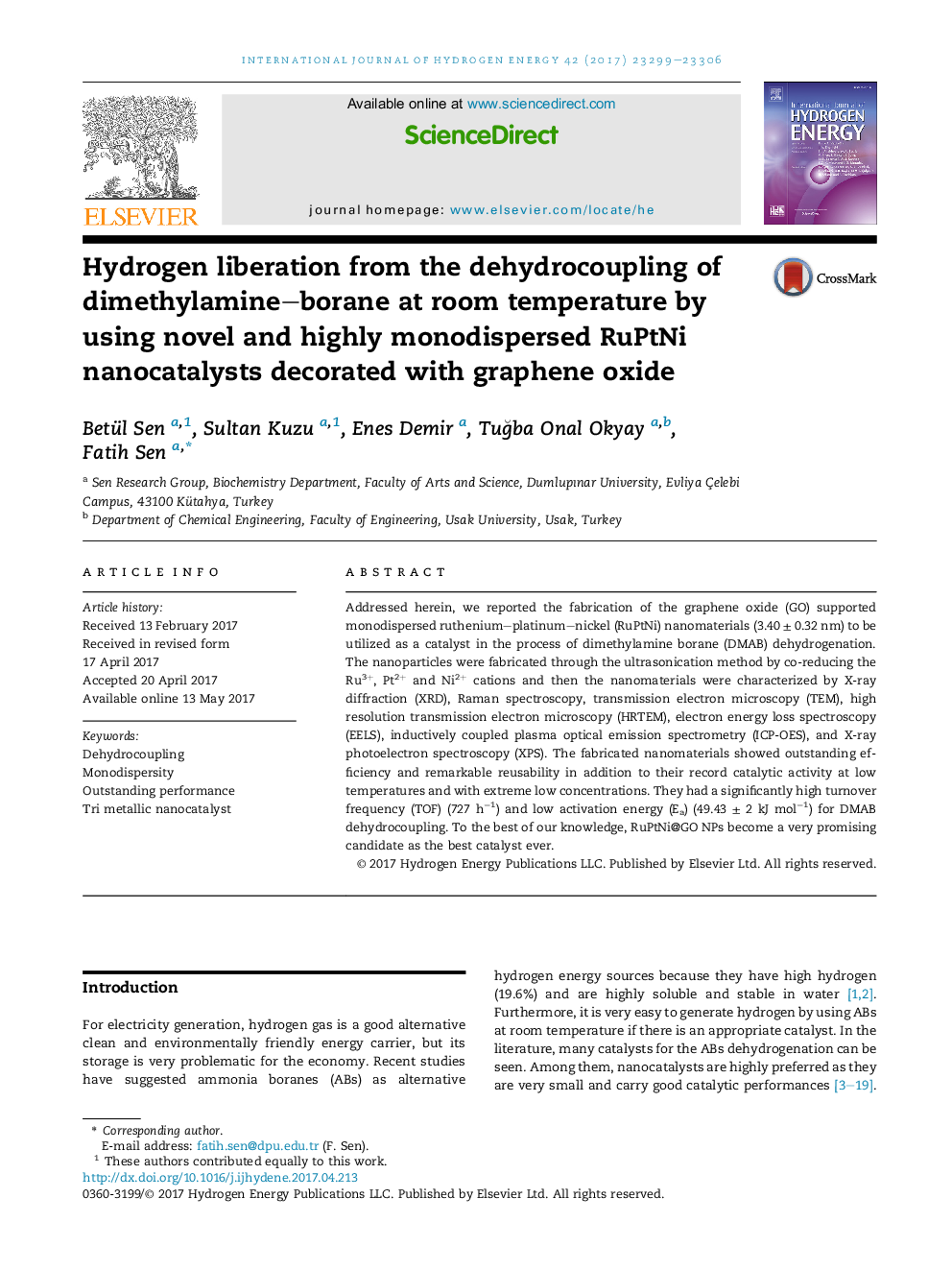| Article ID | Journal | Published Year | Pages | File Type |
|---|---|---|---|---|
| 5145319 | International Journal of Hydrogen Energy | 2017 | 8 Pages |
â¢Highly monodisperse Ruthenium-Platinum-Nickel Alloy Nanoparticles decorated by reduced graphene oxide (RuPtNi@GO).â¢The discovery of a remarkable DMAB dehydrocoupling catalyst.â¢The record TOF value of RuPtNi@GO for dimethylamine-borane dehydrogenation.â¢Thanks to the ultrasmall sizes, monodispersity and high metallic ratio of Ru, Pt and Ni.
Addressed herein, we reported the fabrication of the graphene oxide (GO) supported monodispersed ruthenium-platinum-nickel (RuPtNi) nanomaterials (3.40 ± 0.32 nm) to be utilized as a catalyst in the process of dimethylamine borane (DMAB) dehydrogenation. The nanoparticles were fabricated through the ultrasonication method by co-reducing the Ru3+, Pt2+ and Ni2+ cations and then the nanomaterials were characterized by X-ray diffraction (XRD), Raman spectroscopy, transmission electron microscopy (TEM), high resolution transmission electron microscopy (HRTEM), electron energy loss spectroscopy (EELS), inductively coupled plasma optical emission spectrometry (ICP-OES), and X-ray photoelectron spectroscopy (XPS). The fabricated nanomaterials showed outstanding efficiency and remarkable reusability in addition to their record catalytic activity at low temperatures and with extreme low concentrations. They had a significantly high turnover frequency (TOF) (727 hâ1) and low activation energy (Ea) (49.43 ± 2 kJ molâ1) for DMAB dehydrocoupling. To the best of our knowledge, RuPtNi@GO NPs become a very promising candidate as the best catalyst ever.
